#byzantine inspired fashion
Text

When reading "The Remarried Empress" for the first time, I was so intrigued by Navier's monologue in the first chapter. I thought the premise of the webtoon was great, and I was so excited to learn more about the former Empresses and the world around Navier. Unfortunately, the former Empresses were almost never mentioned and the world building wasn't a central part of the story.
I was so disappointed that I decided to make my own. Thanks to the really talented @vanisagi27 my vision for the very first Trovy Empress came to life.
Here's the lore I created for her:
Ellinier Constantina Trovy
The first Trovy Empress (6th empress of the Empire) .
The Eastern empire was 200 years old when this marriage happened. The Eastern Empire was still in its earlier years. After the 60 year war, it needed a strong monarch to govern it and maintain what was conquered during the war. A marriage was arranged with the third daughter of the Trovy family. This marriage allowed the Trovy's to keep their kingdom intact and created an alliance that lasted over a thousand years.
The Trovy kingdom was famous for educating their daughters and sons the same way. All children were educated in politics, finances, warfare and management, with only the heir having to be versed in martial arts.
This alliance benefitted both parties. The Eastern Empire greatly benefitted from the guidance of a strong and capable Empress and the Trovy kingdom was able to maintain its independence. The Eastern Empire continued to conquer its neighboring kingdoms until only 5 were left in the Old continent:
- The Trovy kingdom from the North East coast;
- The Bluvohan kingdom from the South West coast;
- The South Kingdom from the Great Plains;
- The Whitemond kingdom from the Deep West;
- and The Western Kingdom of the Lazlo.
She was married to Julius Antonius Victor for 42 years. They got married when she was 20 years old (he was 3 years older than her). Even though there was no romantic love betweem them their marriage was a happy one. They maintained a close friendship throughout their lives. The Empress spent most of her free time with her close friend Marchioness Falhan. The Emperor on the other hand spent most of his free time with his childhood friend Duke Tuania.
She was beloved by the commoners. She created laws to protect the conquered people and made it legal for the conquered kingdoms to sent representative to the Senate. She made sure every conquered nation was present when the Foundation Law was written. This legal code, although modified is still being used today.
She gave birth to 6 children. 4 lived to adulthood. Her oldest son inherited the throne.
P.S.
I know that some things are not making sense right now (for example, the last name of the Emperor being Victor instead of Vict), but I promise it will make sense later.
Also, I made the Trovy a foreign royal family instead of nobles of the Eastern Empire.
#the remarried empress#empress navier#navier ellie trovi#rashta#sovieshu#webtoon#art#fantasy#byzantine inspired fashion
31 notes
·
View notes
Text
Asoiaf - fashion of the courts throughout the ages of the Targaryen Dynasty, headcanons.
1) Under Aegon I + Aenys & Maegor : mainly greek/roman & bizantine inspiration for clothing, which correspond respectively to classical Valyrian clothing (greek being the older style, roman the more recent) and to neo-Valyrian clothing, fashion that appeared after the fall of Valyria (the bizantine empire being the "successor" or outright continuation of the eastern roman empire). Marginal use of southern Westerosi fashion, meaning western middle ages (up to beginning of renaissance) type of clothing.
+ in rare instances they still wore a more ancient style of Valyrian clothing inspired by ancient Egyptian fashion.
Bizantine styles :


2) Under Jaehaerys I : bizantine type clothing become slowly associated to ceremonies and used less (they're very ostentatious & not to Alysanne's prefered taste) all the while the Targaryen style takes in more and more westerosi (especially Andal) influences. It's a time of reconciliation with the faith & of deeper attempts at adapting to Westerosi customs. Also a time when the family opens itself more to non-valyrian families, through marriage or attempts at marriage with families like the Arryns & the Manderlys. Greek and roman styles remain a norm though.
👇greek & roman styles examples.


3) Under Viserys I : a bit of a neo-Valyrian (bizantine) revival as the king & the court flaunt the wealth & prosperity of the realm at the time. The nobility at large also begins to wear more classical & neo-Valyrian styles. Princess Rhaenyra is especially fond of this lavish style. But queen Alicent Hightower is more fond of south Westerosi clothing, less lavish, as well as more conservative than the greek & roman styles still widely used, and influences part of the court to chose that style over the other deliberately. The choice of a style of clothing could subtly indicate either black or green sympathies (although Alicent's heirs present at court would still wear Valyrian style clothing/hairstyles to affirm their Valyrian heritage).
Southern Westerosi types of clothes :
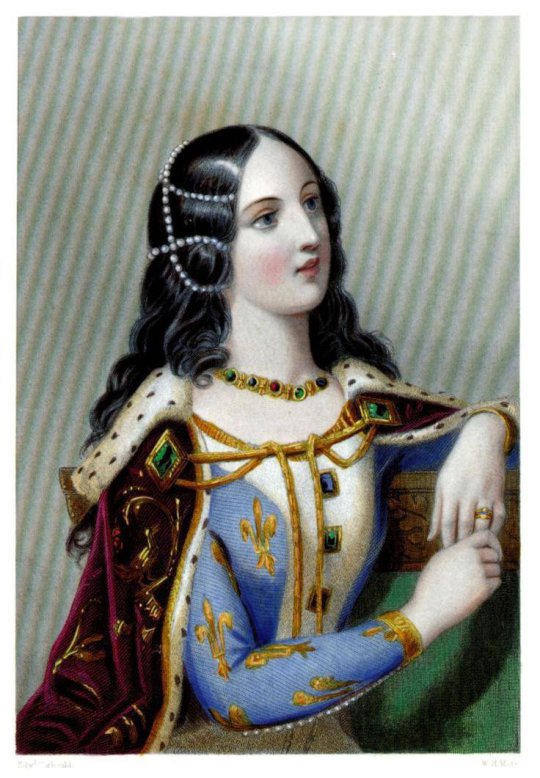
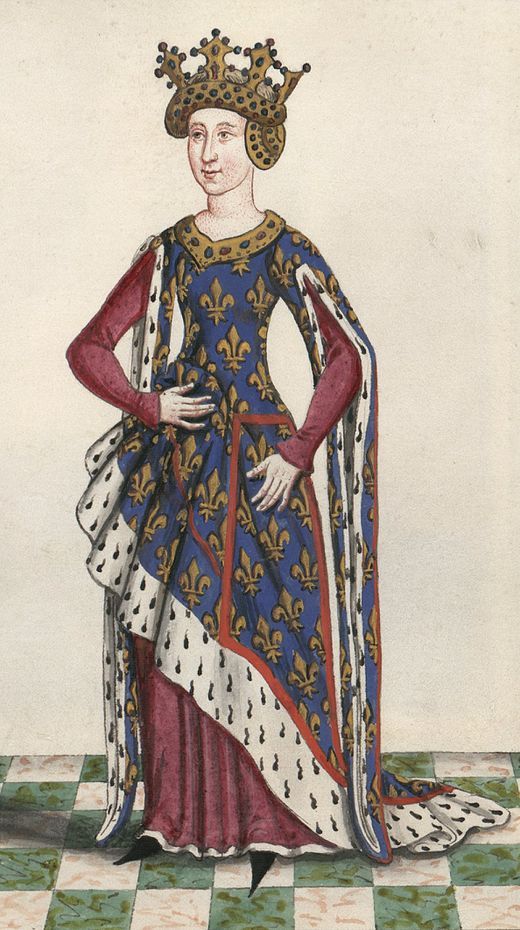
4) Under Aegon III, Viserys II & their sons Daeron I, Baelor I and Aegon IV : general slip towards Westerosi fashion, with some shifts & bumps along the road. Daeron I with his desire to finish what his conqueror ancestors started & appeal to a more prosperous past was more favorable to Valyrian roman/greek traditions of style but the influence of Valyrian ladies like Rhaena of Pentos, Queen Daenaera Velaryon, Rhaena daughter of Aegon III, Elaena Targaryen, Naerys Targaryen who for most of them dressed in westerosi style and were more or less pious faith followers skewed the game, despite outliers like Baela & Daena. There was as well the influence of Baelor Targaryen of course. So the fashion would be more conservative and somewhat less ostentatious (compared to previously) in general.
4.5) Under Aegon IV in particular : The modest wardrobe of Naerys especially would incite her admirers & the followers of her son Daeron to wear simpler more conservative westerosi fashion, while those trying to please Aegon IV (especially by presenting their daughters) and who saw Daemon Blackfyre as more promising than Daeron would skew towards less conservative fashion with greek/roman influences to evoke the Targaryen golden ages (and to be more alluring to the king). Naerys' influence would lead a fashion of hair covering headwear, which would continue into Daeron II's reign.
Examples :


5) Under Daeron II the good : following the trend set above, continues a move towards Westerosi type of clothing over traditional or neo-Valyrian styles. But through Dornish alliances and an established presence at court, introduction of Dornish styles (inspired by morrocan, algerian, possibly turkish medieval/renaissance styles) which would bring back some ostentatiousness & ease the conservatism of the clothes.
Dornish clothing ideas :


That'll be all for now, I just needed that vent ; but later kings' courts continued down that part for sure, which traditional or neo-Valyrians style clothing becoming relatively uncommon for court members to wear, even Targaryen royalty, except in the cases of particular & excentric individuals as different as Aerion Brightflame & Rhaegar Targaryen.
#asoiaf worlbuilding#valyrianscrolls#asoiaf art project#asoiaf art inspirations#house targaryen#greek fashion#byzantine fashion#roman fashion#middle ages fashion#algerian fashion#ottoman fashion#renaissance
66 notes
·
View notes
Text
youtube
Watch the 2024 American Climate Leadership Awards for High School Students now: https://youtu.be/5C-bb9PoRLc
The recording is now available on ecoAmerica's YouTube channel for viewers to be inspired by student climate leaders! Join Aishah-Nyeta Brown & Jerome Foster II and be inspired by student climate leaders as we recognize the High School Student finalists. Watch now to find out which student received the $25,000 grand prize and top recognition!
#ACLA24#ACLA24HighSchoolStudents#youtube#youtube video#climate leaders#climate solutions#climate action#climate and environment#climate#climate change#climate and health#climate blog#climate justice#climate news#weather and climate#environmental news#environment#environmental awareness#environment and health#environmental#environmental issues#environmental education#environmental justice#environmental protection#environmental health#high school students#high school#youth#youth of america#school
11K notes
·
View notes
Photo

The eldest daughter of Aenys and Alyssa was a shy, dreamy child, who seemed to be more comfortable with animals than other children. As a little girl, she often hid behind her mother’s skirt or clung to her father’s leg in the presence of strangers...but she loved to feed the castle cats, and always had a puppy or two in the bed. Though her mother provided her with a succession of suitable companions, the daughters of lords great and small, Rhaena never seemed to warm to any of them, preferring the company of a book.
#valyrianscrolls#rhaena targaryen#asoiaf art#oh SHE#this is kinda inspired by byzantine fashion#fire and blood#house targaryen
201 notes
·
View notes
Text
I made a little clothing guide for some Dragon Age regions
Some may not be exactly the same as the references that appear in the game or in the concepts, but I wanted to give a little of my vision to the guide.
Ferelden
Ferelden is close to the Frostback Mountains and Orlais and as Leliana and Zevran once said, Ferelden is cold, so I thought it would be a cool idea to put on thick clothes with a lot of fur so the Fereldans can protect themselves from the cold.
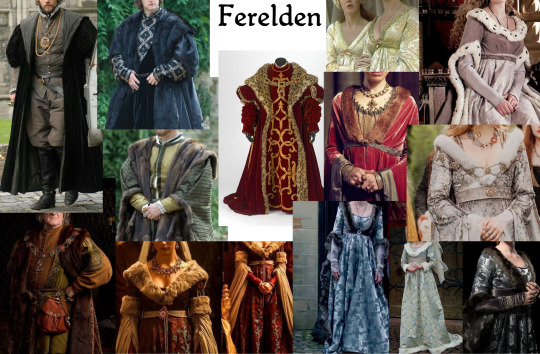
Tevinter
Dragon Age 4 is approaching and it's already evident that we're going to be in the Tevinter Imperium, so I discovered that a lot of Tevinter clothing was inspired by clothing from the Byzantine Empire
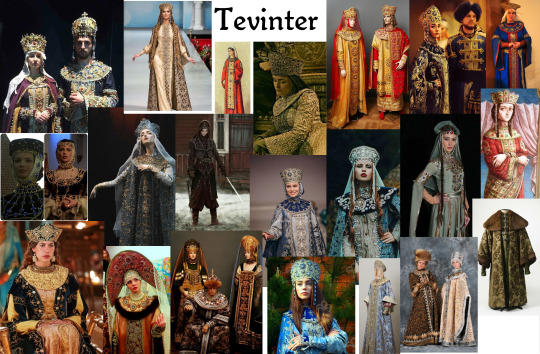
Orlais
We've already seen in the game and in the concept art that Orlais is all about being flamboyant and flashy and what's more flamboyant and flashy than mid-1500s fashion?
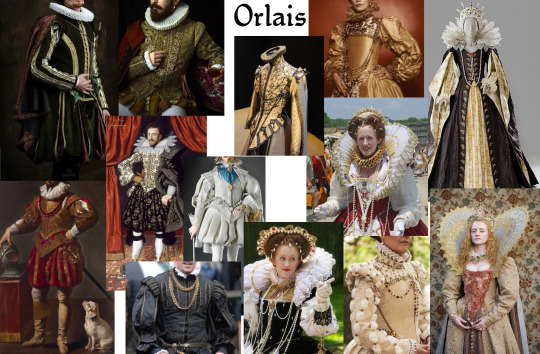
Antiva
Home to the two loves of my life, Zevran and Josephine, Antiva fashion is something I really love… The puffy arms, the breast-enhancing corsets, the leather vests, idk, I just like Antiva
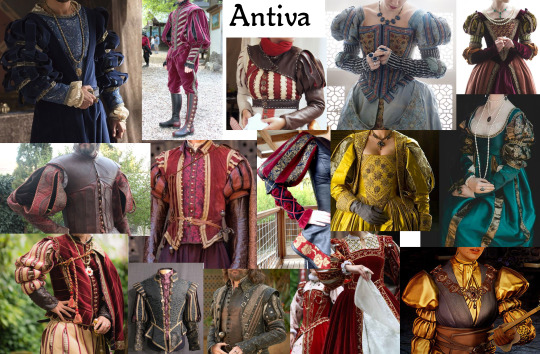
Nevarra
I don't exactly have much to say about nevarra, but I did some research and found some concepts that I thought were interesting, I also saw in some places that said that the kingdom was inspired by the traditional culture of Spain
So I'll leave two references here
One for the traditional clothes and one for what I imagine might look like Nevarra dress


Frostback Basin
In Inquisition we can see that the clothes they wear are quite furry and well protected from the cold, so I think it would be a good idea to inspire some of their clothing in Inuit clothing
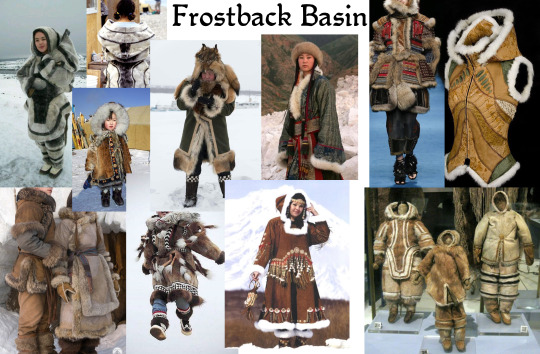
The Dalish (1/2/3/4/5)
Well, for the Dalish I had MANY ideas, among them think about adding traditional clothes from some tribes, native Brazilian/American, African, Hawaiian, Inca, Aztec and Mayan
Remembering that I made a great mix of traditional clothes from several tribes and not just one, and that I also have 0 intention of disrespecting any of them, if I have put something wrong or disrespectful you can be free to alert me
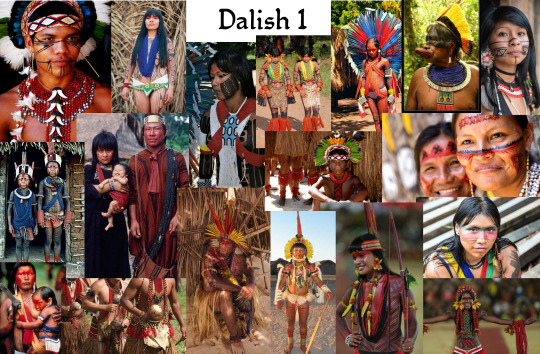


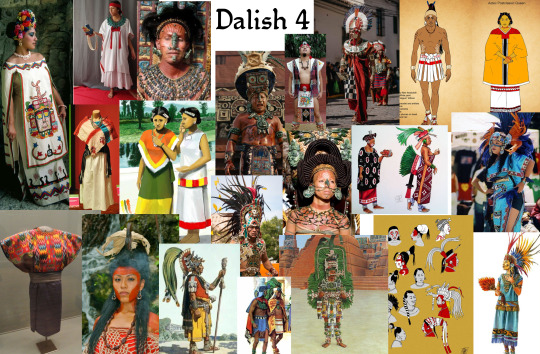
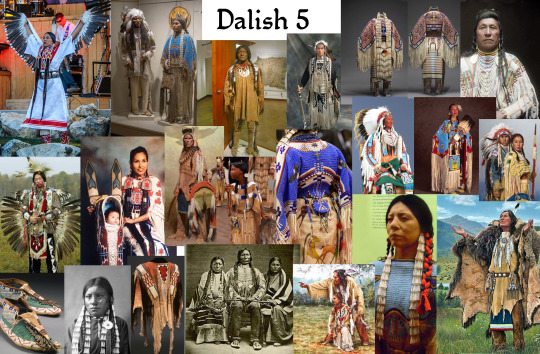
Orzammar
I knew little about Turkey, but when I went to research I ended up enchanted with some of the traditional clothes when I went to research about it and I thought that this style would go well with Orzammar
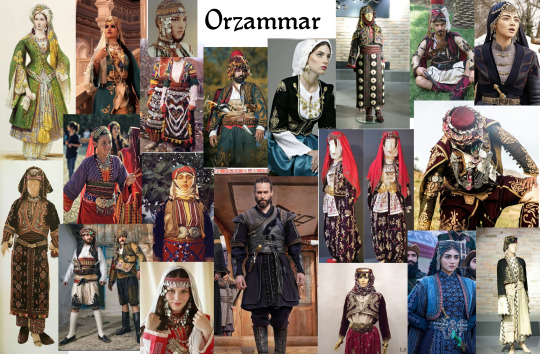
Par Vollen
For Par Vollen, I had a bit of trouble finding it, but I think clothing a little bit closer to the ancient Egyptian style would be something interesting. The light fabrics, the golden jewels adorning the body, idk, I like that idea

Rivain
I was doing some research again and found that part of Rivain's look was inspired by traditional clothing from Islamic Spain and Southeast Asia , so I looked around a bit for something to put here and add one more kingdom to the list
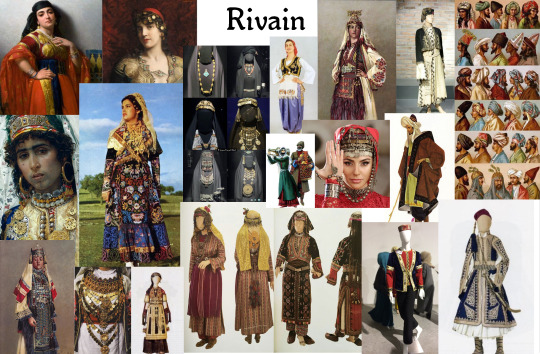
I hope you people enjoyed! Soon I will add more realms as soon as I finish my research
#dragon age fan art#dragon age 2#dragon age origins#dragon age#dragon age awakening#dragon age inquisition#tevinter#orlais#ferelden#frostback basin#antiva#nevarra#Rivain
4K notes
·
View notes
Text
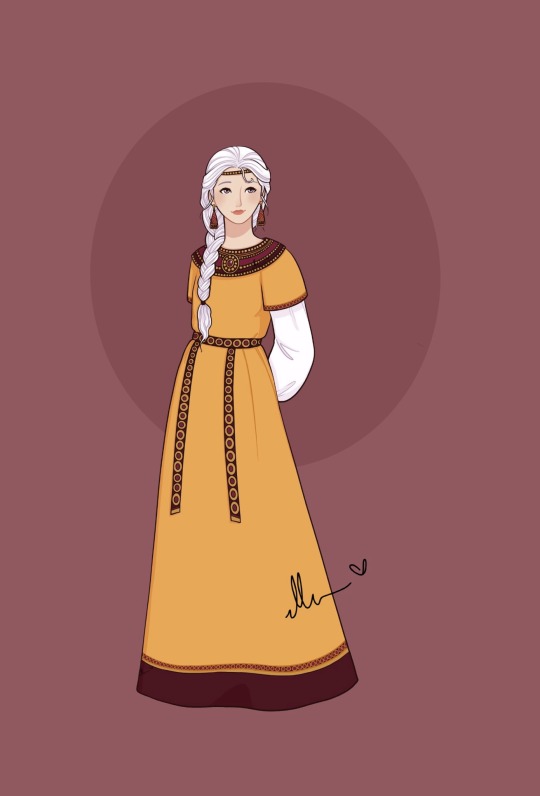
Young Rhaenyra
It's happening! At least a year after Season 1 is relevant I'm finally starting the House of the Dragon series. Like before I'm probably going to just do the ladies, men's fashion in the show has it's weird moments but it isn't my field of interest/expertise so I'll burn out pretty fast if I have to draw that many pants.
We're starting from the beginning with Rhaenyra's yellow dress. The idea of the dress is fine... but the choice of fabric and finishings really undercut her status and character. Supposedly there was a fabric shortage when the show was starting which affected the costuming decisions but I am going to have opinions on how the final product looks. It's understandable for example if a student ran into technical difficulties, but it doesn't mean a lower quality end result wouldn't affect their grade. Anyway there are a LOT of costumes in the series that bewilder me. Especially with the amount of costumes that resemble Spirit Halloween purchases, the fabric often looks too thin or cheap, the appliqués are sometimes painful... and the world-building through clothing makes no sense (watch Sumalee Eaton on clock app for a professional's review with more detail).
Speaking of world building one of the reasons I put this design challenge off for so long was that in my first ASOIAF redesigns I referenced clothing and fashion across different time periods. So when HotD is set ~200 years before ASOIAF... the answer of when/what to base things off of gets real complicated. While keeping up with the reactions to HotD as it aired I came across Sumalee Eaton’s review of the costumes and they recommended that the show lean into its Byzantine inspiration. Every once in the a while the show will have a costume that references a sort of kokoshnik or mantle...but then sabotages itself with either unlined fabric or some haute couture thing.
This is getting too ramble-y, sorry. This is her yellow dress if it leaned into Byzantine fashion, if it reveled in the wealth of the Targaryens with gems and jewelry that are worn with their everyday wear. It's casual, the shape feels appropriately young and unserious but royal all the same. (And before anyone worries this is not an April fools joke, I really am doing a Season 1 redesign series)
I am the artist! Do not post without permission & credit! Thank you! Come visit me over on: instagram, tiktok or check out my coloring book available now \ („• ֊ •„) /
https://linktr.ee/ellen.artistic
#rhaenyra targaryen#team black#fire and blood#house of the dragon#redesigning hotd#ellenart#ellen artistic#character design#digital illustration#costume design#historically inspired#byzantine targaryens#house targaryen
607 notes
·
View notes
Note
hello, my dearest! yes, it me again! *kneels and heavy sigh* I must know my beautiful Rhaenyra fashion. she was recorded in Fire and Blood to dress very lavish in colors, and have a lot of jewerly.
and I keep thinking of her wearing Valerian braiding, and gold hair jewelry in her braids, and beautiful silks, and pearls—- AHHHH. the show did her dirty!!
Emma is a gem, and gorgeous! And they deserved to be dressed in full on Rhaenyra attire. I even imagine Targaryen women wearing facial jewelry, like back in old Valyria, nose piercings.
She is Westeros’ It Girl, where is the luxury??? THE GAWDY BAD BITCHERY OF IT ALL???
Although I absolutely adore the wedding head piece she wore, but her dress….. I just knowwww, traditional wedding attire for Targaryens are so much more. Especially since Targaryens’ culture takes inspiration from the Byzantine empire, and Mongolian culture, and another culture!
You should’ve been in the costume department for show, we have been FAILED.
I can also imagine her in comfort furs. Especially when she would be pregnant, mamas needs to be comfy, and still serve cunt.
Yes justice for Rhaenyra 🫡 (also again with the immaculate timelines for the real life eras I gave to these time periods but this is just spitballing for fun)
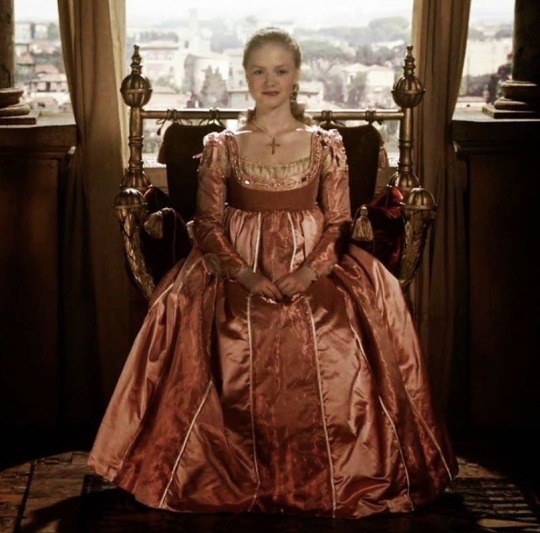


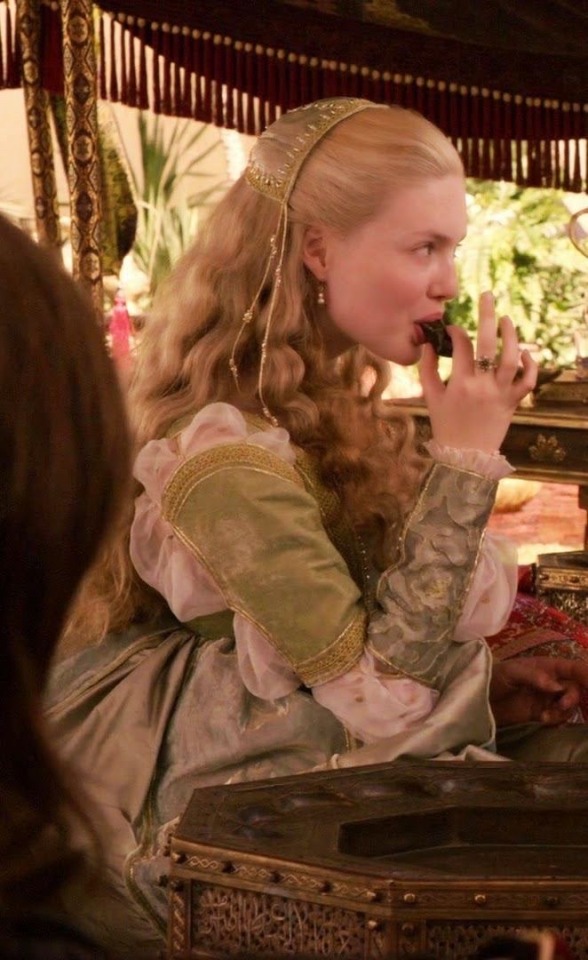
Baby Rhae my Renaissance beloved. Very light colors, she doesn’t always wear red quite yet, she likes to dress in a rainbow of the finest silks merchants have to offer. A high waist and gowns that are not super tight or defined gives her a more youthful look. In my head she likes to match with Ali so they both wear similar gowns, though Rhae’s are noticeably more grand. In her youth her hair was long and loose, covered with a cap during casual situations, braided and looped and covered with netting and pearls during balls/feasts/tourneys
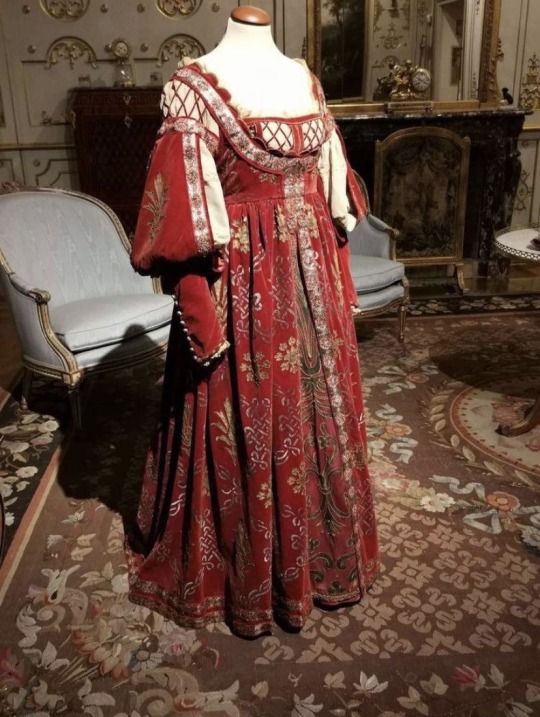


Freshly married Rhae starts wearing a lot more red, trying to really cement her claim as her fathers true heir. She still sometimes wears the gowns she used to match with Ali, however they’re more fitting to a married women, with dark colors and being slightly more fitted to her figure. Her hair is now up too, becoming for a married princess, but she still likes it to be rolled and braided, still covered with pretty things. She’s in a middle ground between childhood and womanhood

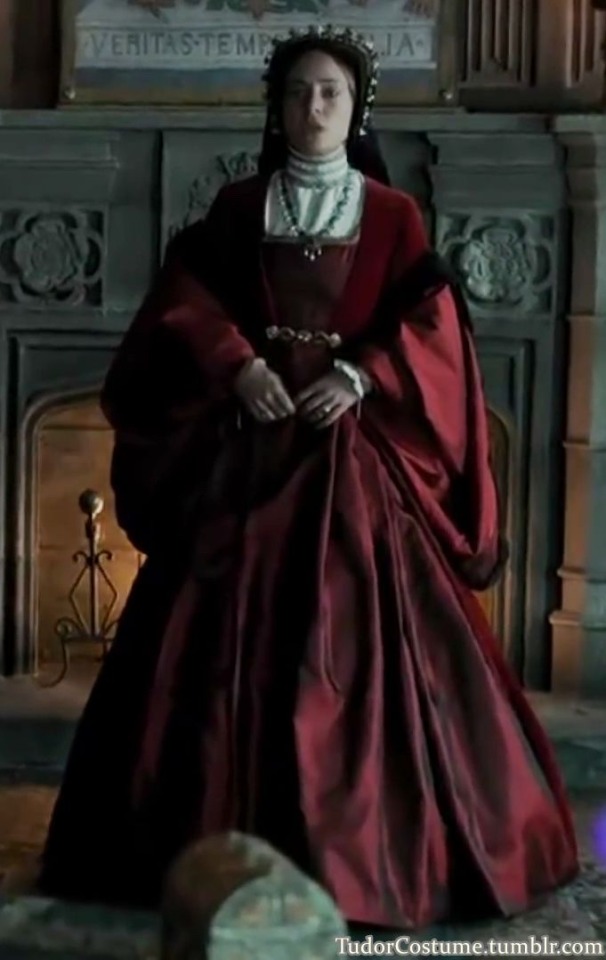

War time Rhae is when she starts becoming very “maegor with teats” she only wears red and black, loathing the color green. Her gowns are now high necked and long sleeved, stern and serious and fitting for a mourning mother. Her hair is often hidden by a hood and veil, but underneath its tightly braided and practical. No longer any signs of the youth she once was
#asoiaf#asoiaf hair and clothing#Rhae plus the cycle of targ doom makes me SICK#ur alive in my head bbg
95 notes
·
View notes
Text
youtube
Watch the American Climate Leadership Awards 2024 now: https://youtu.be/bWiW4Rp8vF0?feature=shared
The American Climate Leadership Awards 2024 broadcast recording is now available on ecoAmerica's YouTube channel for viewers to be inspired by active climate leaders. Watch to find out which finalist received the $50,000 grand prize! Hosted by Vanessa Hauc and featuring Bill McKibben and Katharine Hayhoe!
#ACLA24#ACLA24Leaders#youtube#youtube video#climate leaders#climate solutions#climate action#climate and environment#climate#climate change#climate and health#climate blog#climate justice#climate news#weather and climate#environmental news#environment#environmental awareness#environment and health#environmental#environmental issues#environmental justice#environment protection#environmental health#Youtube
11K notes
·
View notes
Text
Marriage of State AU Character Designs: The Mad King of Mezalea
Joel actually has three major looks through the course of the AU; Prince of Mezalea, Trophy Husband, and King Joel, with the subcategories of "armor" for each.
They all have the same base design of "human", differing by (apparent) age and general sense of style.
Some Joel Skins to start us off and provide the base we're working off of, and also the Mezalean banner because color pallet



And also, because it is actually relevant, (bear with me here) some samples of Mezalean architecture.
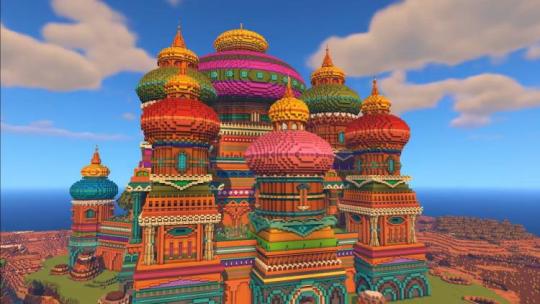

The Matral Palace and the Villager area.
Based off of Joel's final skin, the vibe is kind of "Victorian military dress uniform" however there is something very, very important to take into consideration from a worldbuilding perspective.
The Mesa is a warm weather biome. Its a colorful desert. Which means high temperatures during the day and cold at night. So tight-fitting, thick fabrics in a Victorian style would be incredibly impractical.
So we turn to the second possible source for fashion inspiration: The architecture, which gives mostly Byzantine vibes.
So what would Byzantine clothing look like, especially for nobility?
First off, taking into account that the Byzantine Empire lasted for approximately a thousand years and, naturally, underwent some dramatic changes in clothing style during that time, we'll pick a specific vibe out of the options. I settled on a bit of a mix between Early Byzantine (think the Theodora Mosaic shown below) and Middle Byzantine (see the mosaic of Emperor Constantine IX below)
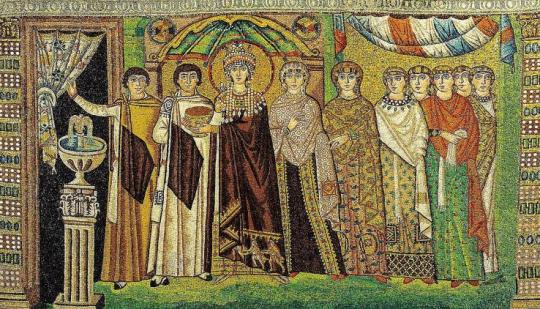
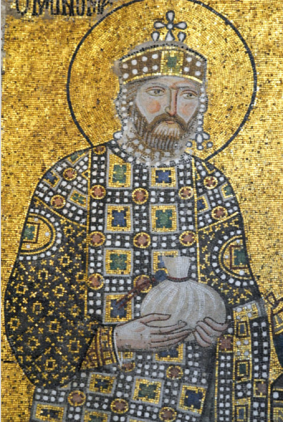
And here are just some screenshots from my pintrest board for Mezalea and Mezalean!Joel, because if I put all these on here separately I'll hit the image limit too soon.
(General disclaimer: yes, Pintrest has an art theft problem, yes Pintrest is much harder to effectively use now due to the pervasiveness of ads on everything, no I don't use it for like, formal things. It remains one of the best ways to collect visual references and figuring out The Vibes)


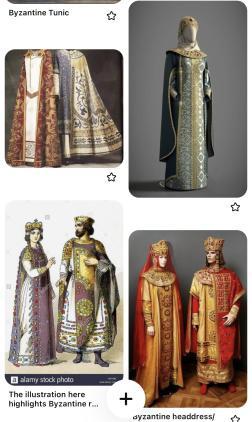

(Yes, we get to go full Material Gworl vibes for the Mezalean King, as is only right and proper.)
General characteristics I'm adopting here for Mezalean clothing:
Brocade (and bejeweled) kaftan/kaftan-esque outer layer. This is a formal wear thing, and is absolutely a "showing off the wealth" power move.
Lots of Big Chunky Colorful Jewelry
I don't know what it's actual name is, but that general style of having jeweled tassel-like things hanging from the front sides of the crown/headdress.
Light-weight and loose fitting under-layers.
And of course, bright colors.
Prince Joel: Before he became part of the main cast in an epic fantasy adventure spanning several hundreds of years and an entire continent (and the adjacent ocean) Joel was the youngest of three princes with two older brothers who were both married and had kids.
Which is to say, it did not look like he would ever be the king.
His role in the kingdom was very much that of an ambassador to and direct connection to their people. He spent a lot of time working on fishing boats and in the mines and quarries. While he did receive a standard royal education on things like diplomacy and combat, international interactions were not his focus at all, much more involved in the day to day operations of his own home. (And yes, that is a very vital aspect of the idea of "royalty" in general, supposedly, and that being a particular point of Joel's upbringing will make more sense when I get around to writing and posting the post about how royalty functions in the Empires. tldr; its related to the whole thing where Pixlriffs accidentally redefined "war")
Basically, Prince Joel = the first skin, the simple green one. He's wearing more lightweight, practical clothes that allow him to engage in physically demanding dirty work without costing a fortune every day. He still dresses up for formal events, but he doesn't even attend all of those and he is far from a daily sight in court.
Trophy Husband: For a couple hundred years, Joel didn't live in Mezalea. Instead, he was one half of the chronological first arranged marriage in the "au in which all the marriages are arranged" situation. And this one was the one that most resembles the set-up of a generic "period" bodice-ripper novel (though that is not how it played out ultimately, for the parties involved, despite the romance that does happen.)
Basically, this is his War Prize Era. In which Lizzie won a husband in combat and then didn't really know what to do with him.
During this time period, Joel mostly wore ocean styled clothing, though during formal occasions he would wear a notable amount of Mezalean accessories, that were part and parcel of the treaty with him. (I'm trying so hard not to derail this into just a breakdown of the events of the Joel & Lizzie arc of the au im trying so hard)
He did tend to mix Oceanic and Mezalean clothing, due in part to Oceanic clothing being primarily designed for underwater wear, while he lived above the surface, finding the balance of practicality and appearances demanded by the political nature of his existence at the time. (Also a personal comfort thing as Mezalean clothing tended to afford more skin coverage and also had shoes) Once he and Lizzie were more comfortable both in the world and with each other he had more opportunities for personalization and tended towards Mezalean styles in oceanic colors. He did develop a significant appreciation for the Oceanic idea of skin-tight under-layers for water travel.
King Joel: He did end up back in Mezalea as king, which is when we hit the style closest to the second skin, which mostly for this is really an indicator of color scheme. Formally, he is now wearing the full Kaftan and Jewelry look, day to day its more of "colorful, simple, and lightweight" because he still is very active in the day to day commerce of his empire. He does usually wear significantly more jewelry than he did as a prince, he grew a taste for it during his trophy husband era XD. The details of his day-to-day wear are also fancier. finer fabrics, more embroidery, brocade hems, etc.
Most of his earrings are gifts from Lizzie, some in Oceanic colors, some in Mezalean, but all with little chips of prismarine to remind him of her even when she can't be there.
Armor: Joel's armor preferences are simple netherite plate. He also does have a ceremonial trident, as a member of the Oceanic royal family. His is gold-plated.
-
art
Lizzie || Jimmy ||
AU Masterpost
#empires smp#empires s1#smallishbeans#the mad king of mezalea#rain rambles#marriage of state au#mos: worldbuilding#mos: joel
128 notes
·
View notes
Text
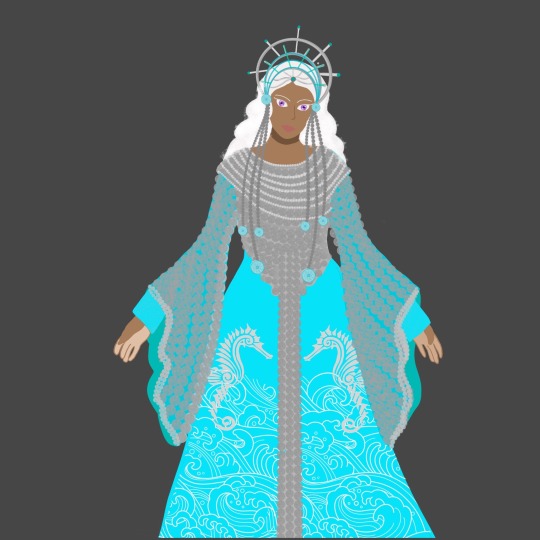

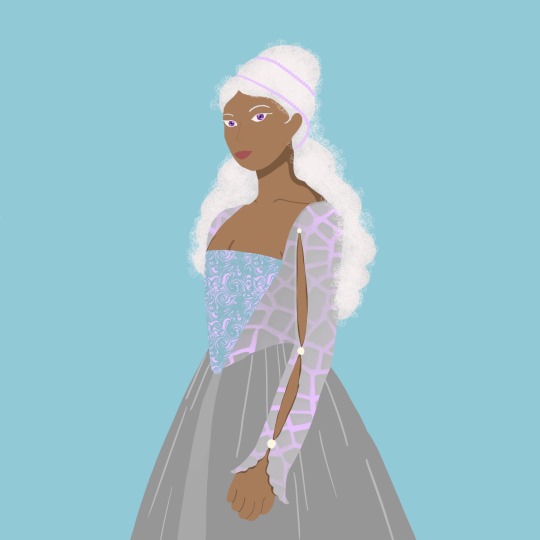



Young Laena Velaryon drawn for @hieronymph
Her dresses are based on Byzantine and Ancient Greek fashion because Rhaenyra’s Byzantine inspired coronation gown was the best of the entire show and that style should’ve been utilized more, especially for the Velaryons who needed better hair and costuming. The other dresses are inspired by 1680s French fashion and Tudor fashion because that’s kind of the head cannon for royalty in the ASOIAF fandom.
Bonus sloppy drawing of Laenor wearing one of Laena’s dresses (Laenor, baby I’m so sorry about your hair both in my drawing and the show):
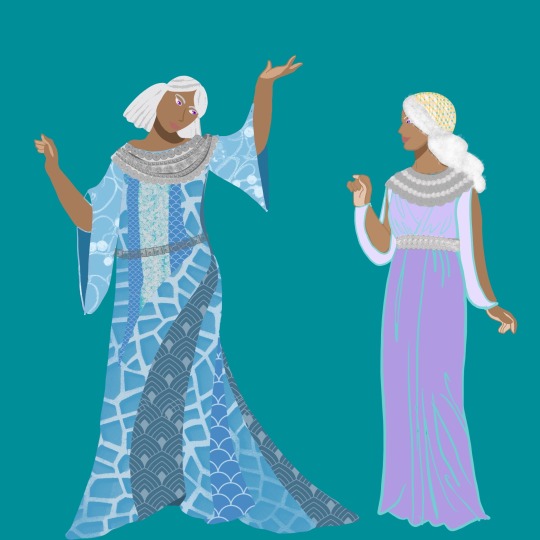
#laena valeryon#laena targaryen#house valeryon#laena velaryon#asoiaf#house of the dragon#a song of ice and fire#HOTD#game of thrones#asoiaf art#HOTD Art#house targaryen#laena x rhaenyra#rhaenyra x laena#laenor valeryon#rhaenys velaryon#rhaenys the queen who never was#rhaenys targaryen#corlys velaryon#alyn velaryon#mine#house velaryon
111 notes
·
View notes
Text
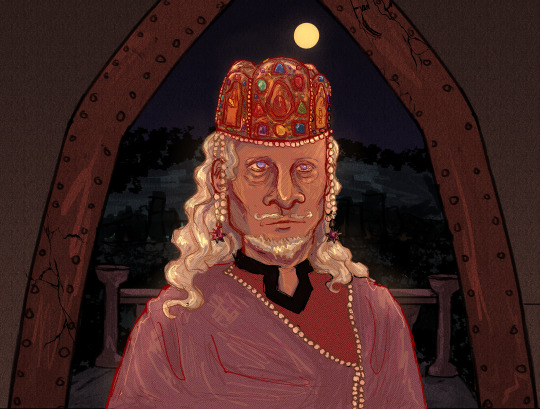
aenys targaryen for @staysail <3 his crown is inspired by byzantine fashion and has been similarly depicted by @amuelia here and @wodania here
53 notes
·
View notes
Photo

C'est fou comme les gens ont de moi cette image de femme sophistiquée, glaciale. C'est une telle erreur, c'est tellement mal me connaître.
- Catherine Deneuve on herself in Belle de Jour (1967)
In anticipation of a new film this summer by Catherine Deneuve called ‘Bernadette’ where she plays Bernadette Chirac, the wife of French Jacques Chirac, I’ve been re-watching some her back catalogue of films. She’s done over 64 films and at almost 80 years old she’s still going strong. And yet out of her many films I’ve always been drawn back to one film which has become a cult classic. Watching it and re-watching it and even gorging on books on its making, new intriguing details reveal themselves about this landmark French art house classic - Belle de Jour (1967).
I once had the privilege of having dinner with her - or rather sat around the same table - through a Parisian host and his lovely wife who had gathered an eclectic group of friends across generations together. I was too self-conscious to talk about her film career directly. I was on surer ground when we indulged in small talk where she was perfectly down to earth and very pleasant. I felt it would be rude to go all fan girl on her and pepper her with questions about Belle de Jour in particular as she’s known to be very ambivalent about her experience of the film - a film that really defined her in the eyes of many people.
But it didn’t mean she didn’t recognise its cultural importance though as she was quite happy to amuse us with a funny story about Belle de Jour. A newly restored 35mm version was funded by the fashion house Saint Laurent back in 2018. Deneuve always had a close relationship with Yves Saint Laurent and also the fashion house. She was the one to introduce Buñuel to Saint Laurent. So the fashion house had a glitzy premiere in New York. But they didn’t count on many of their guests being late. Most of the guests were stuck in the New York traffic and the rain. However Martin Scorsese was the only one to get out of cab and run like a mad man through the pelting rain and huge traffic. A true cinephile, he was so desperate to see the film restored to its former glory that he would go to any lengths to see it.

In Belle de Jour, Catherine Deneuve, whose limpid beauty is capable of sustaining any interpretation, is a perfect Severine and demonstrates a remarkable control in progressing, with enormous economy of gesture and movement, from frigidity to physical warmth as the bored housewife who indulges in part time sex work.
“I felt they showed more of me than they’d said they were going to,” Catherine Deneuve remarked to Pascal Bonitzer in 2004, about the making of Luis Buñuel’s 1967 Belle de jour. “There were moments when I felt totally used. I was very unhappy.”
The story of Séverine, a deeply disenchanted haute bourgeois Paris housewife who finds erotic liberation through byzantine psycho-sexual fantasies and part-time work at an upscale brothel, Belle de jour certainly made extreme demands of Deneuve: her character is flogged, raped, and pelted with muck, among other assaults. But despite her objections to the way she was treated and her difficulties with Buñuel, Deneuve’s performance in Belle de jour turned out to be one of her most iconic.

Deneuve, who had become a star only three years earlier, as the melancholy jeune fille in Jacques Demy’s 1964 all-sung musical The Umbrellas of Cherbourg, was just twenty-three when Belle de jour came out; notably, Buñuel’s film was released in France less than three months after Demy’s radiant, MGM-inspired musical The Young Girls of Rochefort, starring Deneuve and her real-life sister Françoise Dorléac.
But Belle de jour, more than any other film from the first decade of her career, defined what would become one of the actress’s most notorious personae: the exquisite blank slate lost in her own masochistic fantasies and onto whom all sorts of perversions could be projected. (Deneuve as deviant tabula rasa was first seen in Roman Polanski’s 1965 Repulsion, in which she plays a damaged beauty plummeting into psychosis; but Belle de jour doesn’t portray its heroine as mad, instead remaining deliberately ambiguous about the origins of her unconventional desires - and presaging the bizarre libertines she would later play in such films as Marco Ferreri’s Liza, 1972, and Tony Scott’s The Hunger, 1983.)

Buñuel was at a very different stage of his career from his young star, but Belle de jour represented a peak for him as well, the greatest - and most successful - film of his extremely rich late period. These works, bookended by 1964’s Diary of a Chambermaid and 1977’s That Obscure Object of Desire (his final film), were made mostly in France - where Buñuel had begun his filmmaking career with the incendiary, surrealist Un chien andalou (1929) - following the exiled Spanish director’s two decades in Mexico.
Many of these late projects were cowritten with Jean-Claude Carrière and focus intensely on sexual perversion (a theme that recurs throughout Buñuel’s work). Belle de jour certainly falls into that category, and also, typically, skewers the entitled classes. Yet it stands out as the director’s most intricate character study—but of a protagonist who resists definition; the heroine, frequently trussed up and mussed up, retains an odd, opaque dignity in her debauchery.

In that same interview with Bonitzer, Deneuve was judicious enough to distinguish her experience of making Belle de jour from the final product, calling it a “wonderful film.” But her first meetings with Buñuel hinted at the duress that was to follow. According to John Baxter’s 1994 biography, Buñuel, it took time for the director to “warm to” his star: “He felt, with some justice, that she had been foisted on him, first by the Hakims [Belle de jour’s producers], then by her lover of the time, François Truffaut.” After dining with Buñuel at his house, the book recounts, Deneuve “left with little more than an impression that he disliked actors in general and was reserving his decision about her. The only advice he offered was the advice he had always given actors: ‘Don’t do anything. And above all, don’t . . . perform.’”
Though Deneuve deferred to her director, she was no puppet; Belle de jour is as much hers as Buñuel’s. The filmmaker, famously resistant to “psychological” interpretations of his work, stuffs Belle de jour with his trademarks, confounding any attempt to parse meaning: the surrealist blurring of fantasy and reality, fetishism, sexual perversion, blasphemy.
But as Séverine, Deneuve, despite operating in the nebulous realm between dream and waking, imbues the film with irresistible and very real lust - and luster. Sporting the chicest Yves Saint Laurent finery, Deneuve revels in the peculiar desires of her character while always inviting our own. As Buñuel himself acknowledges in his 1984 autobiography, My Last Sigh (published a year after his death), Belle de jour “was my biggest commercial success, which I attribute more to the marvelous whores than to my direction.” (Per Baxter, after the filming of Belle de jour, he would finally admit of his star, “She’s really a very good actress.”) Deneuve’s gift was to update the world’s oldest profession for her still-expanding résumé.

The director had some modifying to do as well. Buñuel, who adapted Joseph Kessel’s 1928 novel with Carrière, assessed the source material dryly in My Last Sigh: “The novel is very melodramatic, but well constructed, and it offered me the chance to translate Séverine’s fantasies into pictorial images as well as to draw a serious portrait of a young female bourgeois masochist. I was also able to indulge myself in the faithful description of some interesting sexual perversions.”
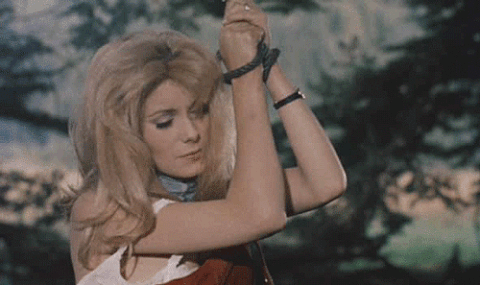
He wastes no time in establishing those bizarre erotic proclivities. In Belle de jour’s opening scene, Séverine and her doting husband of one year, Pierre Serizy (Jean Sorel), a handsome, dutiful surgeon, are snuggled close in a horse-drawn carriage; he interrupts the tender moment with the lament “If only you weren’t so cold.” She pulls away, defensive. The sound of horse bells, which has been increasing in volume from the film’s first shot - and will indicate Séverine’s dreams or fantasies throughout - stops. Pierre orders his wife out of the cab; when she refuses, he and the two drivers remove her by force. She is gagged, bound to a tree, and whipped by the coachmen, who are then instructed by Pierre to rape her. When one begins to ravish her, Séverine appears to be in ecstasy.
This carnal reverie is soon interrupted by the Serizys at home, preparing for their usual chaste bedtime ritual. Pierre, in white pajamas, asks his pale-pink-nightie-clad wife, under the covers in a separate bed, what she’s thinking about: “I was thinking about you . . . and us. We were out for a ride in a carriage”—a scenario Pierre has heard before.

The fantasy clearly belongs to Séverine alone; she finds erotic thrills in her secret thoughts of debasement and humiliation, her florid imagination compensating for her sterile, sexless existence. Her most private desires will soon be realized at 11, cité Jean de Saumur, the address of the boutique bordello run by Madame Anaïs (Geneviève Page), given to Séverine by Pierre’s louche friend Husson (Michel Piccoli).
At Madame Anaïs’s, Séverine - now going by the nom de pute Belle de jour, a reference to her two-to-five shift (she insists on being home when Pierre returns from his workday at the hospital) - is horrified at first but proves to be a quick study. A burly Asian client scares off her two seasoned colleagues with his mysterious, buzzing lacquered box, but she is absolutely transfixed; after the john leaves, she, lying prone on the bed, lifts her head, her luxuriant mane of blonde hair disheveled, to reveal a woman still drunk on orgasmic pleasure.

The contents of the box are one of the film’s many mysteries (when asked what is inside, Buñuel would reply, “Whatever you want there to be”). Yet the greatest enigma is Séverine herself: why does she recoil from the slightest sexual advance from her husband yet lose herself, both in fantasy and in her new line of work, in elaborate masochistic tableaux? “Pierre, it’s your fault too. I can explain everything,” Séverine insists to her husband in the opening fantasy sequence, as she’s being forcibly removed from the landau. But of course, she can’t - and won’t.
As in Repulsion, there are flashbacks to possible childhood trauma in Belle de jour. In one, a man appears to touch a young Séverine inappropriately; in another, she stubbornly refuses the Blessed Sacrament. But unlike in Repulsion, whose final, prolonged shot of a menacing family photo is offered as the root of Carole’s pathology, these scenes in Buñuel’s film are almost non sequiturs, presented not as psychological explanation but as blips in a baroque sexual surrealism.

As Séverine’s reveries and job demands become stranger and more mysterious - in one daydream, she is pelted with thick black mud by Pierre and Husson, who call her “tramp” and “slut”; a ducal client solicits her in the bois de Boulogne to perform in a necrophilic rite - Deneuve retains her porcelain, celestial inscrutability, while simultaneously transforming into an earthbound debauchee, delighting in her own defilement. Madame Anaïs (whose early, shameless flirtation with Séverine - who eventually reciprocates - is the first of the many moments in Deneuve’s filmography that would cement her status as a lesbian icon) touts her new employee’s regal bearing to prospective customers: “[She’s] a little shy, perhaps, but a real aristocrat.”
Séverine’s coworkers, Charlotte (Françoise Fabian) and Mathilde (Maria Latour), are constantly remarking on the impeccable cut and style of her ensembles. Yet what this seemingly untouchable goddess craves most is the brutality of her latest john, the thug Marcel (Pierre Clémenti), a rough with metal teeth, a walking stick that doubles as a shiv, and fetishwear (shiny boots of leather with matching overcoat) that could have been dreamed up in an atelier overseen by Kenneth Anger and Pierre Cardin.
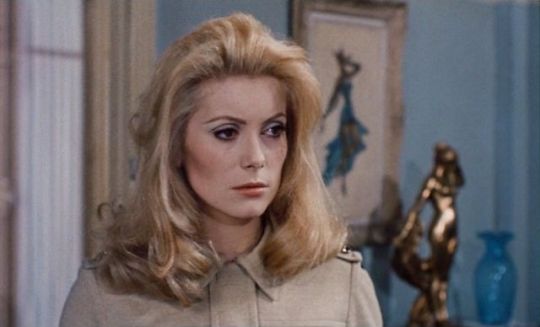
Séverine’s relationship with Marcel will lead to Pierre’s ruin - or does it? The ambiguous ending of Belle de jour suggests that everything that preceded it may have existed only in the heroine’s cracked dreamscape. Like the buzzing box, the film’s final scene is whatever you want it to be.
Yet one thing is certain: Deneuve transcends kink. And despite her misery during the Belle de jour shoot, she would return for even more bizarre treatment three years later in Buñuel’s Tristana, losing both her virtue and a leg.
Almost 55 years after it was made Belle de Jour continues to be a compelling film. It takes on greater curiosity for me as I live in Paris and there are Séverines aplenty that I come across. But the film also speaks to a non-French audience even today as it remains a shrewd commentary on the hypocrisy of social relations and sexual politics. Buñuel invites us to ponder the transgression of a socially respectable woman secretly being a prostitute in the afternoons, but I don’t think he bothered to pose the question why a socially respectable gentleman should be secretly visiting a prostitute in the afternoons - which happens more than one might think and that behaviour is normalised. Something to think about.
#deneuve#catherine deneuve#quote#french#film#movie#cinema#belle de jour#actress#luis bunuel#bunuel#film making#arts#culture#france#scorsese#personal#paris
145 notes
·
View notes
Text
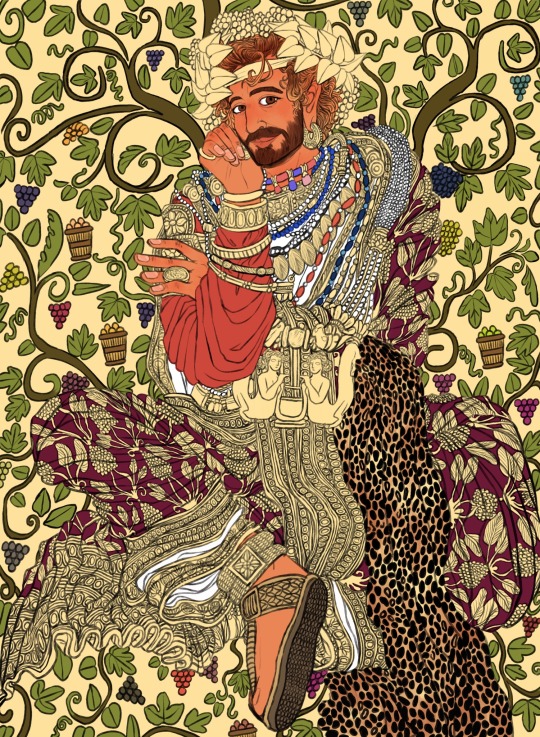
Dionysian grapevine 🍇
Currently available as prints and all forms at Redbubble !
The pose, fashion choice & jewelry were inspired by the previous Indo-Greek bodhisattvas that which I had once shown and reblogged here - compassionate figures who delayed their Buddhahood & help prayers/worshippers to achieve nirvana in their cycle of samsara. (which kind of fit well on the “death, resurrection and rebirth” theme of Dionysus, to be honest; besides his journey spreading the knowledge of “winemaking and its cultivation” across the Mediterranean, Middle East-North Africa, and South Asia. From being almost butchered by the Titans, later being driven mad by Hera to rescuing his mother & lover, Semele and Ariadne from the underworld realm of Hades in some myths.) Despite sharing some similarities with early Christian saints, such as them dressed in princely fine robes and bejeweled from hair to toe, bodhisattvas do not associate with any historical persons or martyrdom at all.
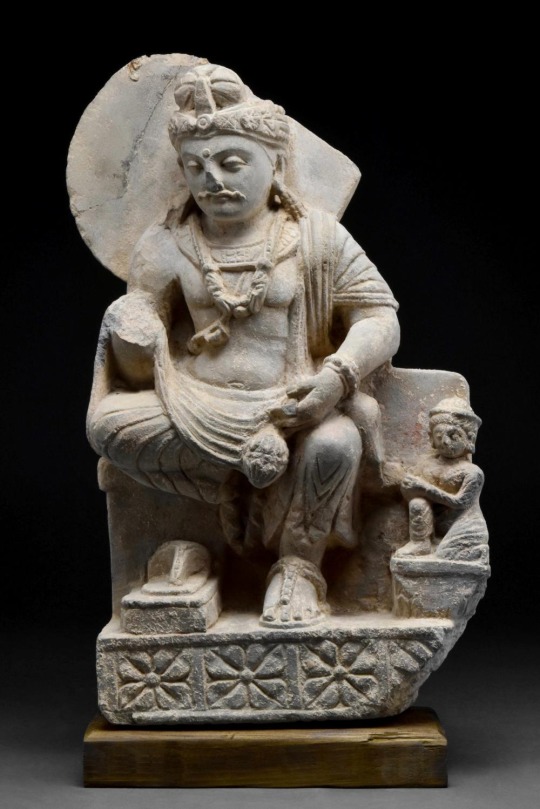


The background was inspired by various late Roman - early Byzantine golden frescoes and mosaics of lush grape vines, specifically, the one they found in the Vatican underground necropolis (with the god “Sol Invictus” in the center, identified with “Helios” of the Greeks) and this Pompeii piece which currently exhibited in the National Archeological Museum of Naples.


#ancient greek#indo greek#indo greek culture#my art#greek mythology#dionysus#bacchus#too lazy to add shadow to this painting#since I kind of want to keep the painting much more stylized more than ever tbh
371 notes
·
View notes
Text

Princess Elia Nymeros Martell, heir to Dorne, and her husband Rhaegar in the year 279 AC.
(this is inspired by my au in which birth orders are swapped — elia is the eldest martell sibling and rhaegar is a second son — so their marriage agreement works the other way, with rhaegar being sent to dorne. elia’s clothes are inspired by fashions in moorish spain during the 11th century, while rhaegar’s are a mix of byzantine and early renaissance italy)
#asoiaf#scribbles#rhaegar targaryen#elia martell#asoiaf fanart#valyrianscrolls#three drawings in a row? it’s more likely than you think#anyway this took me forever#blood sweat and tears went into this#especially all the little suns on elia’s dress#anyway i’m still thinking about what would be different and what would be the same in this au#they would still have 2 children bc elia needs an heir and a spare for dorne#but they would be called obella and doran#the prophecy would still be a thing to a certain extent bc rhae’s neuroses won’t quit#but i think the power dynamic swinging the opposite way would give them a better chance at happiness#however short-lived#given my idea is that rhaegar’s older brother dies just as aerys fully starts to lose it#turning everything on its head#regardless#hope people like this#they’re voted couple most in need of vitamin supplements and therapy <3
214 notes
·
View notes
Text
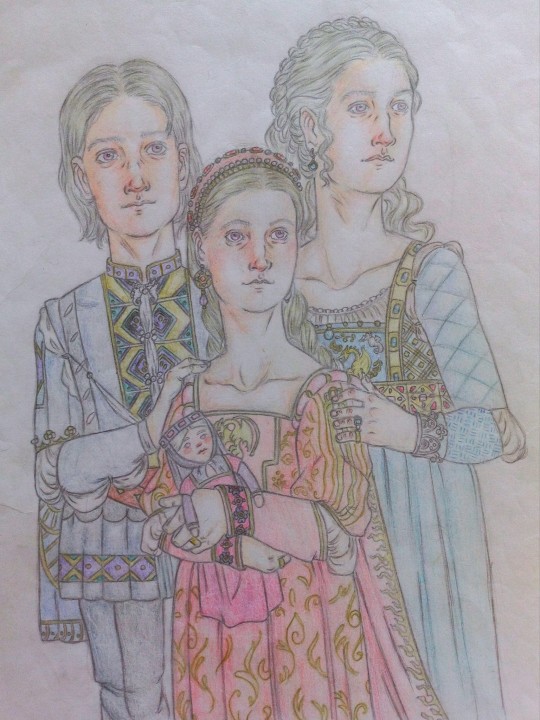
They're the nicest kids in town
The three great grandchildren of Jaehaerys circa 107/109 ac, Laenor, Rhaenyra, and Laena
The general inspiration was early 16th century Italian fashion, though with Laenor, I used some byzantine references
#rhaenyra targaryen#laenor velaryon#laena velaryon#asoiaf#valyrianscrolls#fire and blood#fanart#pre asoiaf#the dance of the dragons#my art#Had some issues with the silver blonde hair#I'm not satisfied anymore with the way that I do it#which consists basically of using silver and a very light yellow#I hope Laena looks like a teenager here#the doll is supposed to be Rhaena daughter of Aenys#also I see no straight person on this photo
67 notes
·
View notes
Text

a series of outfit concepts for Pax... I find clothing to be such an interesting part of character design and wanted to explore that more for her. especially since he's one of my more fashion-conscious characters. miscellaneous notes and extra doodles under the cut
the first four of these designs are worn in cyrodiil; the last two are from the shivering isles. I haven't done much brainstorming for cyrod fashion so that was something fun to explore - especially with the challenge of keeping to a similar-ish silhouette and with pax's tastes in mind. most inspiration was taken from byzantine fashion, with some influences from roman and celtic garb as well. there was also a fair bit of simply making shit up. (I also had quite a bit of fun fucking with the saturation and colour values a bit in editing: here's the initial image, minus the increased saturation and also with the finger tattoos on the wrong hand because I got left and right mixed up at first. oops.)

of all my characters, pax is one of the pickiest about how they dress; they don't like fashion at the expense of comfort but they don't like comfort at the expense of fashion, either. he likes bright colours and good quality fabric (ends up stealing and altering a lot of his clothes.) she tends not to wear things with very overt nibenese influences due to her own associations with that style of clothing + nibenese garb tends to have a lot of flowy extra fabric, which she doesn't like. I had a lot of fun trying to explore different ideas, colour palettes, and statement pieces while keeping to roughly similar-ish shapes; for each one I also included slightly different versions of Pax's endless repertoire of jewellery and ways to do their hair.
notes on specific designs: the third one incorporates more of how I picture nibenese fashion, the first one is a reimagining of an outfit i drew them in ages ago, and the second references a piece I wrote and haven't yet published, in which the blades get martin a lot of nice warm clothes, including a long blue tunic (seeing as cloud ruler temple is cold as shit and all he has is a ruined liturgical vestment and some cheap clothes pax stole him during their journey) and pax unceremoniously commandeers most of it. the last two outfits are mostly just self-indulgent - in the state he's in by the time they get to the shivering isles, pax isn't too fussed about appearances, but I wanted to explore what they would wear if they did give a shit. I tried to roughly keep similar elements to the rest of the outfits, with enough tweaks to make it clear that they are very much Of Another Place. I used red as a major tone and colour in both because pax fucking hates it :) (it's the colour of the deadlands, and the mythic dawn robes, and the amulet of kings.)
there were a few more specific things I would have liked to design - in particular a travelling outfit and some concepts for the really fancy garb they take on once they murder their way into a duchy - but those, as well as a breakdown of their armour, are things I would want to give more attention to detail to. so I will do all that separately sometime. however I did do an extra doodle, not included above, of their sleepwear; because it's extremely simple, and because I've never drawn her with her hair down and I really, really wanted to. (even if it's unrealistic; pax mostly sleeps with their hair still up in some finicky arrangement sewn tight enough in place to last for a week.)

#look at my images and rambles. boy#anyway I need to go to sleep!! big day tomorrow!! but all of this was very fun to draw and write out#my art#oc tag#pax#tesblr#the elder scrolls#tes#fay draws#oblivion#the shivering isles#shivering isles#fay talks fashion#cyrodiil
26 notes
·
View notes
Text
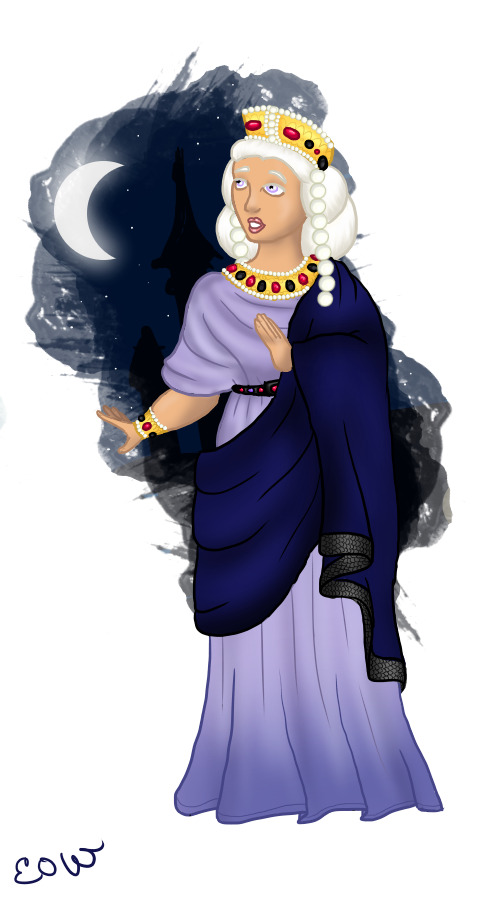
Next is Daenys the Dreamer, who foresaw the Doom of Valyria. As a result of her visions, her father moved the family to the distant outpost of Dragonstone, and the Targaryens and their dragons survived the cataclysm.
Since she's significantly more recent than the rest of the figures in the project, being Aegon the Conqueror's great-great-great-grandmother, so is her inspiration. I'm hardly the first person to draw a Byzantine Targaryen, but there's a reason for that - the historical parallels are excellent, and the fashion is pretty excellent, too.
(You can't really tell so much now that I've separated them, but she's also shorter and younger than everyone else - this is her as a Valyrian maiden, having her visions, rather than her as the eventual matriarch and co-ruler of Dragonstone)
52 notes
·
View notes
Text

Alicent wears her mother’s dress
As someone who held off watching the show properly for a long time, I thought that the dress that Otto Hightower convinces her to wear for Viserys was the green dress. Imagine my surprise when I was listing all the costumes/plot points to redesign that the seduction dress is the "blue-ladder dress". Curveball for the ages. (It's also what happens when only two actors are portraying an almost 20 year time jump over the course of a season.)
When I saw the Blue ladder dress for the first time I nearly laughed. The bodice pattern and the fabric catch the light in a pretty way but the peak-a-boo cut-outs make it a strange modern hybrid that really needed something between the skin and the blue gown. I can see the slashing inspiration but it's just another choice that highlights the lack of chemises and rich layers of fabrics. And we want rich, luxurious fabrics and draping that really highlights what the height of Targaryen power looks like. So... here we are. I kept the blue so the actual Green Dress can stand out later as a bigger change, and I tried to imply that this was a less-Targaryen (Byzantine) inspired fashion. The cut, silhouette, and shape is different. Hopefully creating a visual contrast that Alicent can find ways to replicate later in the season as well.
I am the artist! Do not post without permission & credit! Thank you! Come visit me over on: instagram, tiktok or check out my coloring book available now \ („• ֊ •„) /
https://linktr.ee/ellen.artistic
#alicent hightower#team green#fire and blood#house of the dragon#redesigning hotd#ellenart#ellen artistic#character design#digital illustration#costume design#historically inspired#valyrianscrolls#house hightower
504 notes
·
View notes